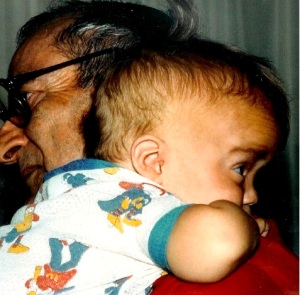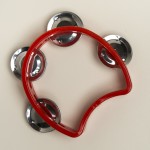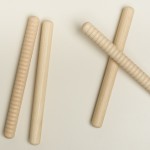by Beth Finke
This post originally appeared on Ellen Seidman’s Love That Max blog, which she describes as “a blog about kids with special needs who kick butt.” We liked it so much we asked Ellen if we could share it here with our Easter Seals Blog readers. She generously said yes, and here it is.
7 ways to encourage play for kids with special needs
by Ellen Siedman
 When Max was a tot, one of the biggest challenges I faced was helping him play. He wasn’t able to easily grasp toys or push buttons, so I’d enable him as best I could. Playing with toys is a fundamental right of childhood, and no way did I want Max to miss out.
When Max was a tot, one of the biggest challenges I faced was helping him play. He wasn’t able to easily grasp toys or push buttons, so I’d enable him as best I could. Playing with toys is a fundamental right of childhood, and no way did I want Max to miss out.
For advice on enabling play for kids with fine-motor challenges, I hit up occupational therapist Ellen Martino, a pediatric occupational therapist in Stratford, Connecticut, with 25-plus years of experience. These are her top tips.
First up: Make sure your child is in a stable position.
“This is really important for a child who has challenges with fine-motor skills,” says Martino. “If a child has to exert energy to sit in position and work at keeping his trunk upright, it makes it difficult for him to use his hands to explore toys. You can have your child sit on the floor, positioned between your legs, or prop him up against a couch with rolled towels or cushions on either side.” When Max was a tot, I’d seat him on the floor tucked into the nursing pillow. “Older kids do better sitting at a kid’s table, with a chair that allows their feet to be flat on the floor,” notes Martino. “Some children may need an adaptive chair with arms to provide additional trunk support.”
Give a little massage.
“Kids who have fine-motor-skill issues don’t get all the sensory input other kids do when they’re touching, grabbing, holding and crawling,” says Martino. “So before play, it helps to ‘wake up’ their hands. An easy thing to do is hold your hand against your child’s hand, palm to palm. Then give some deep pressure, moving from the base to the fingers.”
Try a warm-up activity.
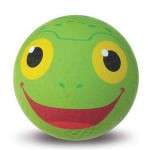 “Use something as simple as a small, soft squishy ball, squeaky rubber toy or even a bean bag to help get a child’s hands ready for play,” says Martino. “If a child’s hand is fisted, gently help him open it so he can hold the object, then help him squish or squeeze it. For a child with low-tone, try helping him to use his hands to push into the toy while it is on the table or floor, providing some resistance and weight bearing.” Another good get-going move: Take a medium-size ball, like the Froggy Kickball. Place the child’s open palms against it and help them to bang on the ball or push it.
“Use something as simple as a small, soft squishy ball, squeaky rubber toy or even a bean bag to help get a child’s hands ready for play,” says Martino. “If a child’s hand is fisted, gently help him open it so he can hold the object, then help him squish or squeeze it. For a child with low-tone, try helping him to use his hands to push into the toy while it is on the table or floor, providing some resistance and weight bearing.” Another good get-going move: Take a medium-size ball, like the Froggy Kickball. Place the child’s open palms against it and help them to bang on the ball or push it.
Place toys in a vertical position.
This encourages visual attention and an upright posture and improves shoulder stability. “If you have a sturdy easel, you can put a puzzle on it. Or buy a little ledge, attach it to the wall of your playroom and rest puzzles or magnet boards on it,” suggests Martino. You can also place toys on a slant board on a table, or make your own; Martino suggests using an extra-wide three ring binder, and putting a piece of rubber drawer liner beneath it to keep from slipping.
Think beyond a toy’s “intended” use.
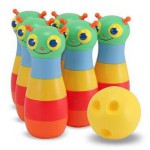 “It’s the process of the play—and the fun!—that’s key for all children, especially a child with fine-motor-skill challenges,” says Martino.” A child with limited fine-motor skills might get frustrated if, say, he can’t yet roll a ball and knock down pins in a bowling play set. But he might very well enjoy holding onto a pin and banging it on a rug. “That can help build his confidence,” says Martino. “He’s enjoying making a toy do what he wants it to.”
“It’s the process of the play—and the fun!—that’s key for all children, especially a child with fine-motor-skill challenges,” says Martino.” A child with limited fine-motor skills might get frustrated if, say, he can’t yet roll a ball and knock down pins in a bowling play set. But he might very well enjoy holding onto a pin and banging it on a rug. “That can help build his confidence,” says Martino. “He’s enjoying making a toy do what he wants it to.”
Remember, not all play has to be therapeutic.
“Parents of kids with special needs often feel pressure that play has to be somehow therapeutic,” says Martino. “What’s important to remember is that all types of play are important for children, no matter what they are doing. If a child is really into it, laughing and having fun, he may be moving around, exploring, gaining sensory input and working on balance and visual attention. Maybe he will use his affected hand more by trying to reach for, push against or lean on something. Play is a wonderful way to strengthen fine-motor skills, but most important is that a child is having fun and is successful.”
Involve your kid in clean-up.
As Martino says, “It gives them fine-motor practice, teaches them to sort, fosters independence, helps kids see a clear beginning and ending—and teaches them to help clean up!”
 One thing I really like about NPR’s Fresh Air show is that whenever Terry Gross interviews a celebrity, she manages to come up with a question the star has never been asked before. Last week Fresh Air re-broadcast a show Terry Gross did with Comedy Central’s Amy Schumer, and in the interview, Terry Gross asked the comedienne about her father.
One thing I really like about NPR’s Fresh Air show is that whenever Terry Gross interviews a celebrity, she manages to come up with a question the star has never been asked before. Last week Fresh Air re-broadcast a show Terry Gross did with Comedy Central’s Amy Schumer, and in the interview, Terry Gross asked the comedienne about her father.







